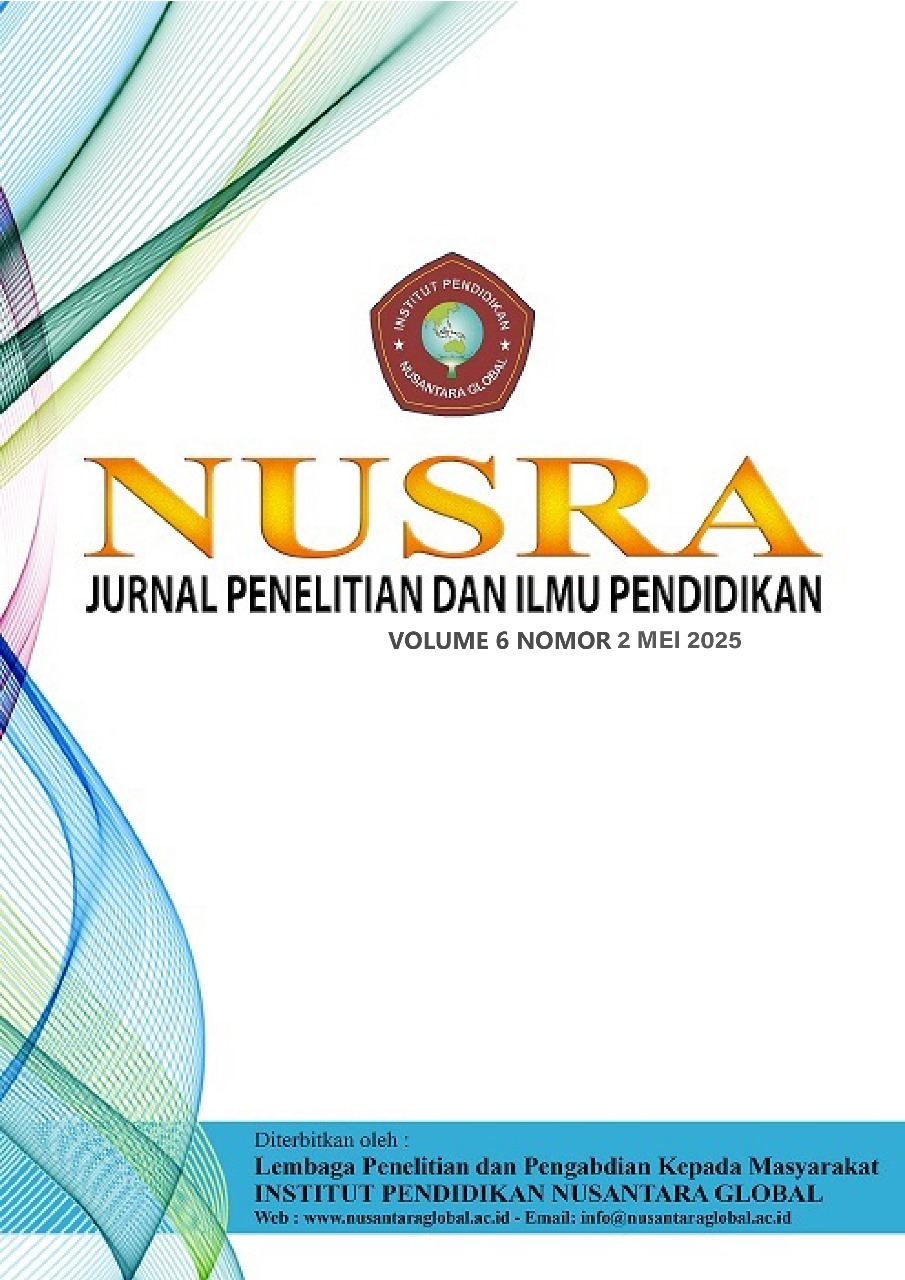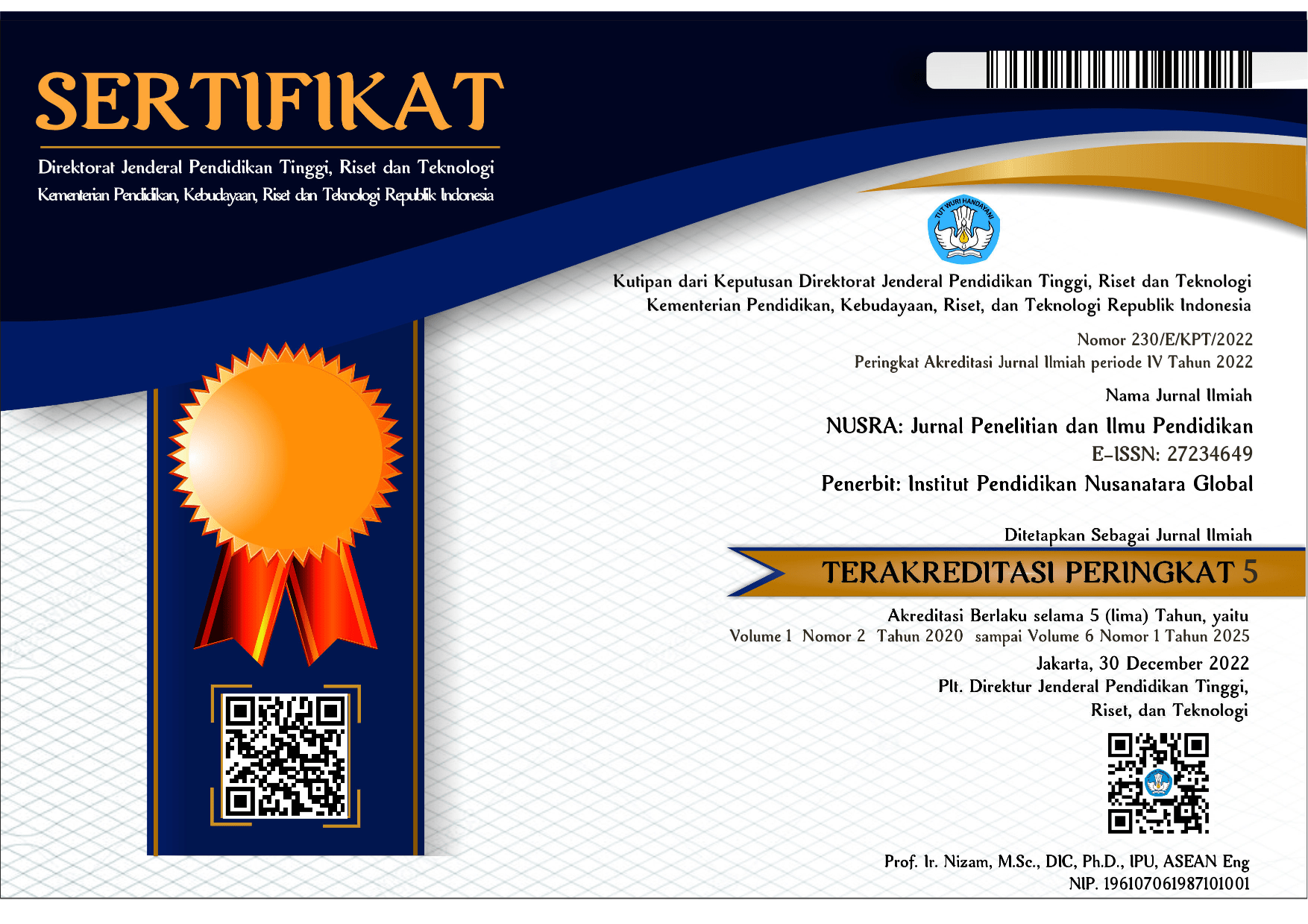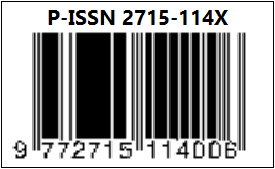Augmented Reality (AR)-Based Learning Innovation To Improve Student Understanding Subjects
DOI:
https://doi.org/10.55681/nusra.v6i2.3592Keywords:
Augmented Reality, Educational Technology, Student Understanding, Learning Innovation, Interactive LearningAbstract
This study investigates the implementation of Augmented Reality (AR) technology as an innovative learning tool to enhance student understanding across various subjects. The integration of AR in educational settings has shown promising potential in creating interactive and immersive learning experiences. Through a systematic analysis of AR implementation in classroom settings, this research examines its effectiveness in improving student comprehension, engagement, and learning outcomes. The study employs a mixed-method approach, combining quantitative assessment of student performance with qualitative evaluation of learning experiences. Results indicate that AR-based learning significantly improves student understanding, with particular effectiveness in subjects requiring spatial visualization and complex concept comprehension. This research contributes to the growing body of knowledge on educational technology integration and provides practical insights for educators seeking to implement AR-based learning solutions.
Downloads
References
Akçayır, M., & Akçayır, G. (2017). Advantages and challenges associated with augmented reality for education: A systematic review of the literature. Educational Research Review, 20, 1-11.
Bacca, J., Baldiris, S., Fabregat, R., & Graf, S. (2014). Augmented reality trends in education: A systematic review of research and applications. Educational Technology & Society, 17(4), 133-149.
Chang, S. C., & Hwang, G. J. (2018). Impacts of an augmented reality-based flipped learning guiding approach on students' scientific project performance and perceptions. Computers & Education, 125, 226-239.
Chen, P., Liu, X., Cheng, W., & Huang, R. (2017). A review of using Augmented Reality in Education from 2011 to 2016. Innovations in Smart Learning, 13-18.
Cheng, K. H., & Tsai, C. C. (2016). The interaction of child–parent shared reading with an augmented reality (AR) picture book and parents' conceptions of AR learning. British Journal of Educational Technology, 47(1), 203-222.
Creswell, J. W., & Creswell, J. D. (2018). Research design: Qualitative, quantitative, and mixed methods approaches. Sage publications.
Diegmann, P., Schmidt-Kraepelin, M., Van den Eynden, S., & Basten, D. (2015). Benefits of Augmented Reality in Educational Environments: A Systematic Literature Review. Wirtschaftsinformatik Proceedings 2015.
Fuchsova, M., & Korecko, S. (2019). Augmented reality as a tool for improving the interactivity of education. Applied Sciences, 9(7), 1447.
Ibáñez, M. B., & Delgado-Kloos, C. (2018). Augmented reality for STEM learning: A systematic review. Computers & Education, 123, 109-123.
Johnson, L., Smith, R., Willis, H., Levine, A., & Haywood, K. (2016). The 2016 Horizon Report. Austin, Texas: The New Media Consortium.
Johnson, L., Adams Becker, S., Cummins, M., Estrada, V., Freeman, A., & Hall, C. (2016). NMC Horizon Report: 2016 Higher Education Edition. Austin, Texas: The New Media Consortium.
Liu, D., Dede, C., Huang, R., & Richards, J. (2016). Virtual, augmented, and mixed realities in education. Singapore: Springer.
Merchant, Z., Goetz, E. T., Cifuentes, L., Keeney-Kennicutt, W., & Davis, T. J. (2014). Effectiveness of virtual reality-based instruction on students' learning outcomes in K-12 and higher education: A meta-analysis. Computers & Education, 70, 29-40.
Wang, M., Callaghan, V., Bernhardt, J., White, K., & Peña-Rios, A. (2017). Augmented reality in education and training: pedagogical approaches and illustrative case studies. Journal of Ambient Intelligence and Humanized Computing, 8(1), 1-12.
Wang, Y. H., Duh, H. B. L., Li, N., Lin, T. J., & Tsai, C. C. (2017). An investigation of university students' collaborative inquiry learning behaviors in an augmented reality simulation and a traditional simulation. Journal of Science Education and Technology, 26(2), 161-176.
Wu, H. K., Lee, S. W. Y., Chang, H. Y., & Liang, J. C. (2013). Current status, opportunities and challenges of augmented reality in education. Computers & Education, 62, 41-49.
Yilmaz, R. M. (2016). Educational magic toys developed with augmented reality technology for early childhood education. Computers in Human Behavior, 54
Downloads
Published
How to Cite
Issue
Section
License
Copyright (c) 2025 Putrawan Saleh Laia, Zun Kelvin Eferistus Albers Halawa, Intan Hartini Ndruru, Suryani Gulo, Sailas Mardianti Zega, Jernita Gulo, Yaredi Waruwu

This work is licensed under a Creative Commons Attribution-ShareAlike 4.0 International License.














